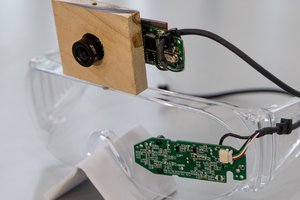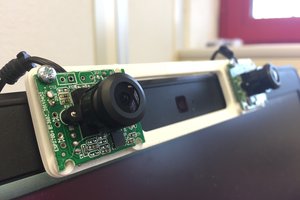The purpose of this project is to test an interactive method of teaching letters and spelling to small children. In a nutshell, the project is a photo gallery application that can be navigated with an input device resembling traditional letter block toys. So it combines an interface that's proven to work with small children with an activity that interests them, i.e. viewing photos. The input device can of course be adapted to work with other software.
The input device is based on the optical recognition of shapes. The main unit houses a camera, and hollow letter blocks are slotted on to the main unit so that the center point of the camera lens aligns with the centers of the hollow letter blocks. Each letter block has a number of protrusions (inward-sticking LEGO blocks) on the inside, and these protrusions are what allows the device to determine, which letters have been input.
One important aspect of the project is that it's made almost entirely from multi-use parts. Learning toys like this will only be used for a limited amount of time, so it's important that they can be recycled or reused efficiently. ABC Camera consists of a Raspberry Pi, a Pi camera, breadboard, LEDs, some jumpers, and a lot of LEGO-style bricks. These can be used as toys or for other hobby projects, and most can be sold in second-hand markets. Similar devices could probably be built more simply and cheaply with custom-made or specialized parts, but they would be much more difficult to reuse. ABC Camera on the other hand can be used as a child's first computer (with the addition of a keyboard) or modified into a child-friendly camera (with a battery pack, shutter button, and optionally a thermal printer). Slightly older children can use the components to learn the basics of electronics.
 Tommi Nieminen
Tommi Nieminen
 John Evans
John Evans
 AIRPOCKET
AIRPOCKET

 tomburtonwood
tomburtonwood